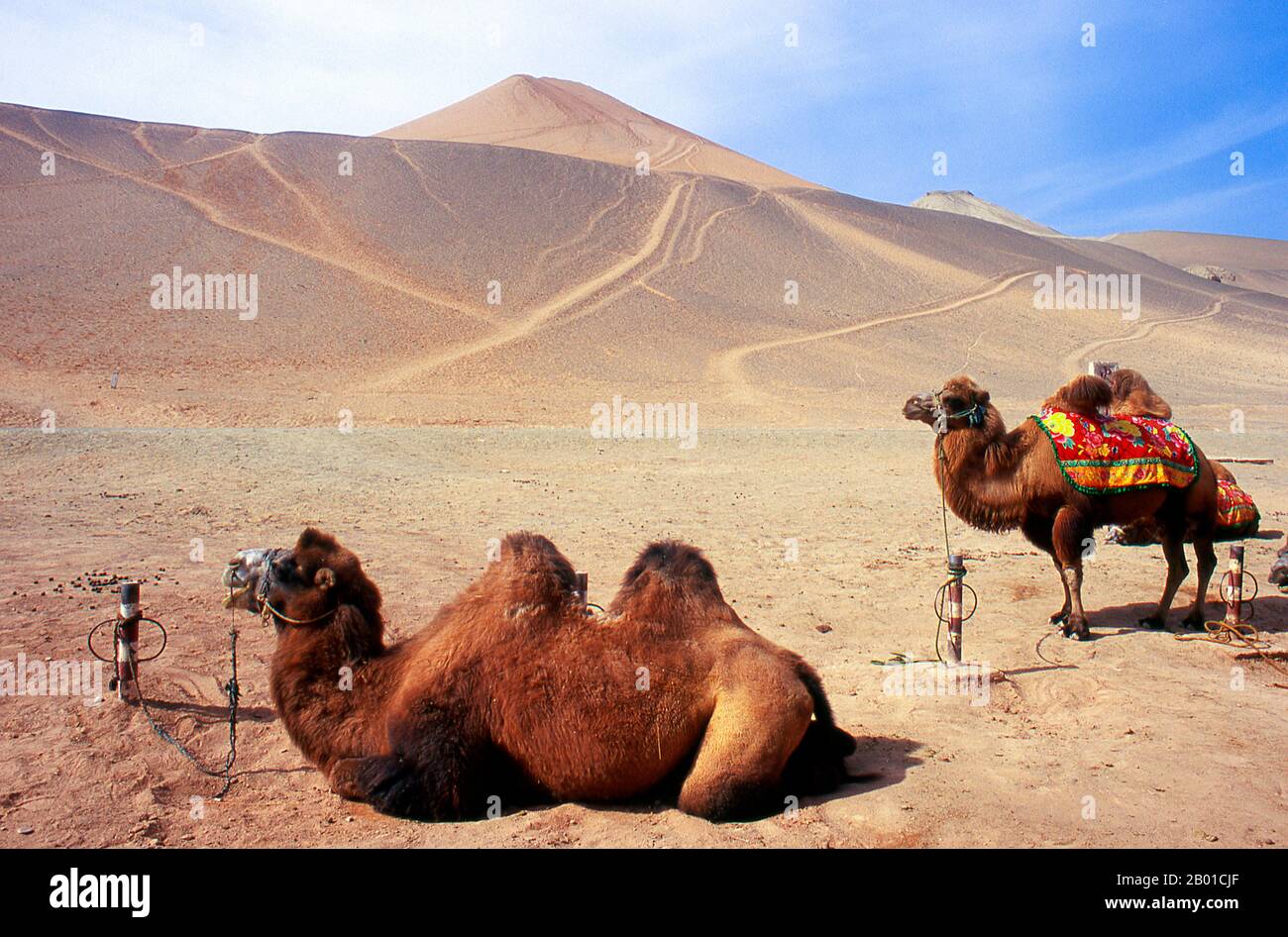China: Camels in the desert near the Bezeklik Caves, Turpan, Xinjiang Province. The Bactrian camel (Camelus bactrianus) is a large even-toed ungulate native to the steppes of central Asia. It is presently restricted in the wild to remote regions of the Gobi and Taklimakan Deserts of Mongolia and Xinjiang, China. The Bactrian camel has two humps on its back, in contrast to the single-humped Dromedary camel. The Bezeklik Thousand Buddha Caves (Bozikeli Qian Fo Dong) are complex of Buddhist cave grottos dating from the 5th to the 9th centuries. There are 77 rock-cut caves at the site.

RMID:Image ID:2B01CJF
Image details
Contributor:
CPA Media Pte Ltd / Alamy Stock PhotoImage ID:
2B01CJFFile size:
50.1 MB (2.7 MB Compressed download)Releases:
Model - no | Property - noDo I need a release?Dimensions:
5155 x 3397 px | 43.6 x 28.8 cm | 17.2 x 11.3 inches | 300dpiDate taken:
12 July 2011Photographer:
Pictures From HistoryMore information:
This image could have imperfections as it’s either historical or reportage.